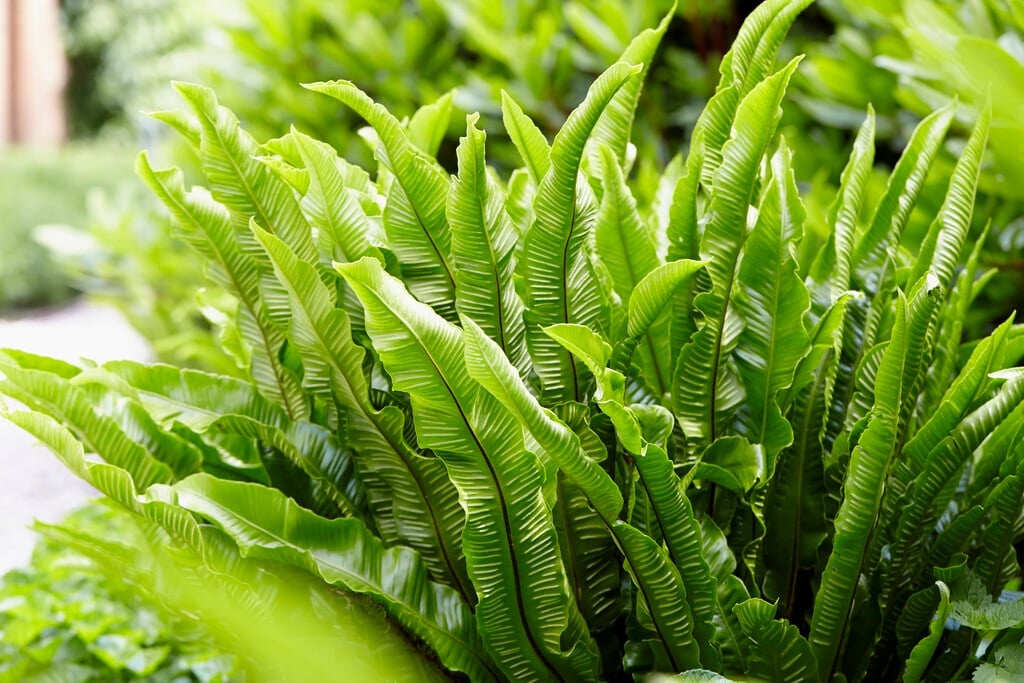Asplenium scolopendrium
hart's tongue fern
An evergreen fern forming a rosette of arching, rich green, strap-shaped fronds 30-75cm in length, the margins often undulate. Spores borne in conspicuous transverse stripes beneath the fronds
Synonyms
Phyllitis scolopendriumSize
Ultimate height
0.1–0.5 metresTime to ultimate height
5–10 yearsUltimate spread
0.1–0.5 metresGrowing conditions
Moisture
Moist but well–drainedpH
Alkaline, NeutralColour & scent
| Stem | Flower | Foliage | Fruit | |
| Spring | Green | |||
|---|---|---|---|---|
| Summer | Green | |||
| Autumn | Green | |||
| Winter | Green |
Position
- Full shade
- Partial shade
Aspect
North–facing or West–facing or East–facing
Exposure
Exposed or Sheltered Hardiness
H6Botanical details
- Family
- Aspleniaceae
- Native to GB / Ireland
- Yes
- Foliage
- Evergreen
- Habit
- Tufted
- Genus
Asplenium are evergreen ferns with short, usually erect rhizomes bearing a rosette of slightly leathery fronds which may be simple, pinnate to 3-pinnate
- Name status
Correct
- Plant range
- Temp. N. Hemis.
How to grow
Cultivation
Grows well in humus-rich, moist but well-drained soil. Bright mid-day sun can cause damage. May be sensitive to fungicides. Tolerant of dry shade but water regularly during the first season and mulch well. See how to grow ferns for further advice
Propagation
Propagate by division, or propagate by sowing spores as soon as ripe at 15°C
Suggested planting locations and garden types
- Cottage and informal garden
- City and courtyard gardens
- Flower borders and beds
- Ground cover
- Underplanting of roses and shrubs
Pruning
Dead or damaged fronds may be removed as necessary
Pests
Generally pest-free outdoors
Diseases
May be susceptible to a rust in mild, damp winters
Get involved
The Royal Horticultural Society is the UK’s leading gardening charity. We aim to enrich everyone’s life through plants, and make the UK a greener and more beautiful place.
